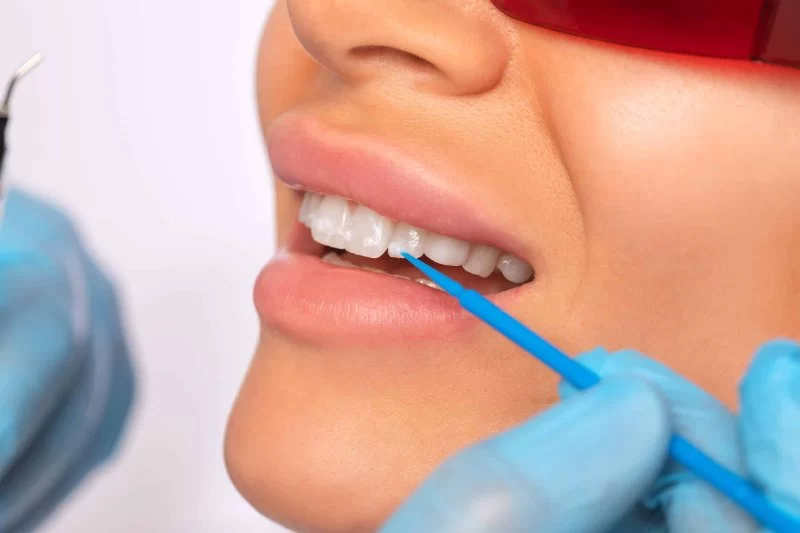
- 1-understanding-how-smoking-causes-teeth-staining
- 2-common-types-of-teeth-stains-from-smoking
- 3-practical-ways-to-reduce-teeth-staining-from-smoking
- 4-natural-methods-and-home-remedies
- 5-professional-dental-solutions
- 6-lifestyle-changes-for-lasting-results
- 7-expert-insights-from-family-dentistry-online
1. Understanding How Smoking Causes Teeth Staining
For many smokers, one of the most visible side effects of their habit is yellow or brown teeth. Smoking exposes your mouth to tar, nicotine, and other chemicals that attach to tooth enamel. When these substances combine with saliva, they create sticky deposits that penetrate the porous surface of enamel, leading to discoloration over time. Understanding how to reduce teeth staining from smoking starts with learning how these stains form—and why they are so persistent.
Nicotine, when exposed to oxygen, turns yellowish-brown and easily embeds into the enamel’s microcracks. Over months or years, this staining becomes more pronounced, especially for heavy smokers. Cigarettes, cigars, and even vaping products contribute to surface discoloration due to the heat and tar released during inhalation.
While quitting smoking remains the most effective solution, there are several ways to minimize and reverse these stains through consistent care and the right whitening strategies. Dental experts at Family Dentistry Online emphasize that with proper intervention, smokers can restore their natural tooth color and improve their oral health at the same time.
2. Common Types of Teeth Stains from Smoking
2.1 Surface Stains (Extrinsic Stains)
These stains appear on the outer layer of your teeth and are typically caused by the direct contact of tobacco and tar with enamel. They can often be removed through regular dental cleaning or whitening toothpaste designed for smokers.
2.2 Deep Stains (Intrinsic Stains)
Unlike surface stains, intrinsic stains develop within the tooth structure itself. Nicotine and tar molecules can seep beneath the enamel, especially in long-term smokers. These stains require professional whitening treatments to lift pigment from deeper layers effectively.
2.3 Combined Stains
Most smokers experience a combination of both types. The outer enamel becomes dull and yellow, while inner layers darken over time. Addressing these requires a dual approach—surface cleaning plus deeper whitening solutions.
3. Practical Ways to Reduce Teeth Staining from Smoking
3.1 Brush and Floss Regularly
Smoking increases plaque buildup, which traps stain-causing particles. Brushing at least twice a day and flossing daily helps remove residue before it sets. Use toothpaste specifically formulated for stain removal, containing gentle abrasives or activated charcoal.
3.2 Rinse After Smoking
After smoking, rinse your mouth with water or a mild antibacterial mouthwash. This simple step reduces the contact time of tar and nicotine with your teeth, minimizing discoloration and odor.
3.3 Hydration and Saliva Production
Smoking reduces saliva flow, which naturally cleanses your mouth. Drinking plenty of water and chewing sugar-free gum stimulate saliva production, helping to flush away stain-causing substances more effectively.
3.4 Avoid Stain-Amplifying Foods and Drinks
Coffee, red wine, and dark sodas worsen the staining effect of smoking. If consumed, follow up with water rinses or brushing to prevent pigment from bonding with enamel.
4. Natural Methods and Home Remedies
4.1 Baking Soda and Hydrogen Peroxide
A mild mixture of baking soda and hydrogen peroxide can act as a gentle whitening paste. Use it sparingly—once or twice a week—to avoid enamel erosion. This combination helps lift surface stains while disinfecting the mouth.
4.2 Oil Pulling
Swishing coconut oil in your mouth for 10–15 minutes daily helps remove bacteria and stains naturally. This traditional remedy is popular for improving overall oral hygiene and brightening the teeth’s appearance over time.
4.3 Crunchy Fruits and Vegetables
Apples, celery, and carrots act as natural scrubbers for your teeth. Their fibrous texture removes debris while stimulating saliva production, which helps neutralize acids and prevent further discoloration.
4.4 Whitening Strips and Over-the-Counter Products
For mild smokers, whitening strips and pens can make a visible difference. However, consistency is key—improvement typically occurs gradually with regular use. Always follow product instructions carefully to avoid gum sensitivity.
5. Professional Dental Solutions
5.1 In-Office Whitening Treatments
Professional whitening uses concentrated peroxide gels activated by light or heat to remove deep stains quickly and safely. Most patients notice significant improvements in a single visit. Dentists at Family Dentistry Online recommend this option for long-term smokers seeking fast, reliable results.
5.2 Deep Cleaning and Polishing
Scaling and polishing remove hardened tartar and plaque, which often trap smoke-related pigments. This not only improves appearance but also supports gum health, reducing the risk of periodontal disease caused by tobacco use.
5.3 Veneers or Bonding for Severe Discoloration
In extreme cases where enamel has absorbed deep stains or become damaged, veneers or composite bonding can restore aesthetics. These cosmetic treatments provide a fresh, uniform color while protecting underlying tooth structures.
6. Lifestyle Changes for Lasting Results
6.1 Reducing or Quitting Smoking
The most effective way to prevent stains is to reduce smoking frequency or quit altogether. Within weeks of quitting, you may notice natural whitening as new stains stop forming and your saliva’s pH normalizes.
6.2 Regular Dental Checkups
Visiting your dentist every six months ensures early detection of staining, decay, or gum issues. Regular professional cleanings remove plaque buildup and preserve the results of whitening treatments.
6.3 Adopting a Balanced Diet
Foods rich in calcium, vitamin D, and fiber strengthen enamel and prevent discoloration. Strawberries and citrus fruits, in moderation, can naturally polish teeth due to their malic acid content.
7. Expert Insights from Family Dentistry Online
7.1 The Science Behind Whitening
Experts at Family Dentistry Online explain that smoker’s stains differ from typical discoloration due to the chemical composition of tar and nicotine. They bind tightly to enamel pores, making professional-grade treatments the most effective approach for long-lasting brightness.
7.2 Customized Whitening Plans
Every patient’s smoking habits and enamel sensitivity differ. Personalized whitening plans balance safety with results—combining in-office sessions with at-home maintenance products designed for smoker-specific stains.
7.3 Building Healthier Habits
Reducing teeth staining is not just about appearance—it’s about restoring oral health. With proper guidance, even long-term smokers can achieve cleaner, whiter smiles. Family Dentistry Online provides comprehensive care, from stain removal to preventive dental health plans, helping patients regain confidence in their smiles.
By understanding how to reduce teeth staining from smoking and committing to daily care, you can protect both your teeth’s appearance and long-term health. Your smile deserves consistent attention—and with expert help, it can shine again.

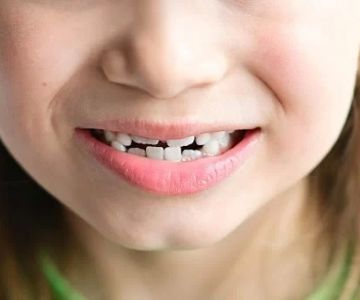




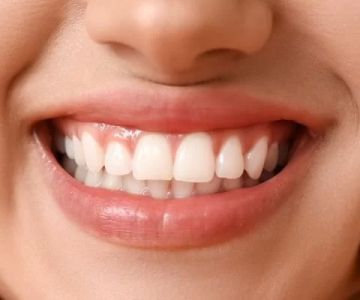
 Manhattan Dental Arts4.0 (394 review)
Manhattan Dental Arts4.0 (394 review)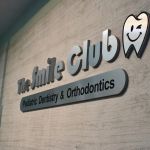 The Smile Club4.0 (120 review)
The Smile Club4.0 (120 review) Calder Dental4.0 (5 review)
Calder Dental4.0 (5 review) Chaska Family Dental4.0 (266 review)
Chaska Family Dental4.0 (266 review) Clove Dental Camarillo4.0 (225 review)
Clove Dental Camarillo4.0 (225 review) Deem Thomas E DDS5.0 (4 review)
Deem Thomas E DDS5.0 (4 review) The Importance of Oral Health Education During Pregnancy for a Healthy Pregnancy
The Importance of Oral Health Education During Pregnancy for a Healthy Pregnancy Best Tips for Brushing Your Teeth Properly for Healthy Gums: Essential Techniques for Oral Health
Best Tips for Brushing Your Teeth Properly for Healthy Gums: Essential Techniques for Oral Health Why Skipping Dental Checkups Can Lead to Bigger Oral Health Problems
Why Skipping Dental Checkups Can Lead to Bigger Oral Health Problems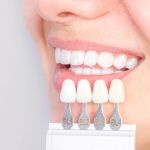 Advantages of Porcelain Dental Restorations
Advantages of Porcelain Dental Restorations How Can Diabetes Cause Tooth and Gum Problems? Preventing and Managing Oral Health Issues
How Can Diabetes Cause Tooth and Gum Problems? Preventing and Managing Oral Health Issues Healthy Habits for Promoting Good Oral Health and Hygiene: Tips for a Healthy Smile
Healthy Habits for Promoting Good Oral Health and Hygiene: Tips for a Healthy Smile